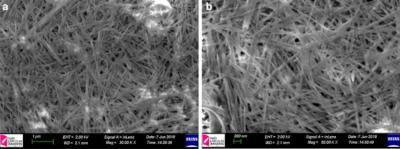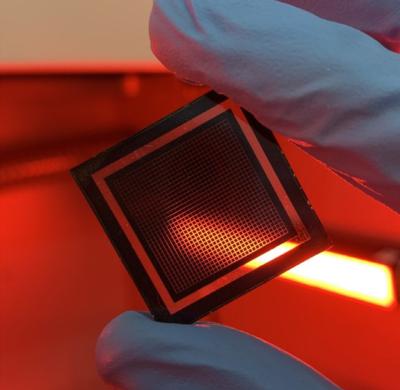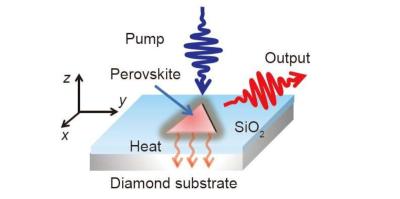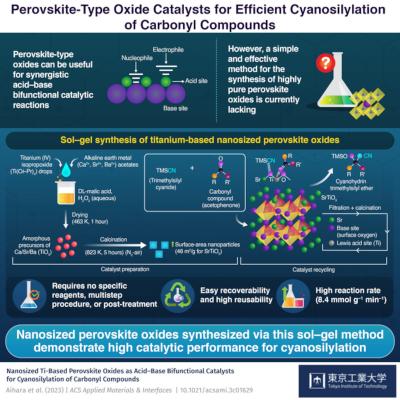Perovskite-Info weekly newsletter
Published: Tue, 04/18/23
The Perovskite-Info newsletter (April 18, 2023)
Cannot read this? View it online here
Researchers develop self-powered perovskite photon-counting detectors
University of North Carolina at Chapel Hill researchers have demonstrated that self-powered polycrystalline perovskite photodetectors can rival the commercial silicon photomultipliers (SiPMs) for photon counting.
The new type of photon counting detector could have applications in consumer electronics, sensors, optical communication, radiation detection, and more. It could also offer safer medical imaging and enhance nighttime photography. The team's recent work could open up various new applications of photon counting for perovskites that use their unique defect properties. Compared to current technologies on the market, the team’s technology is reportedly more cost effective and does not require external power sources, broadening the scope of how the technology can be applied
Researchers show clay substance can improve the efficiency and stability of perovskite solar cells
Scientists from Turkey's Konya Technical University have shown that sepiolite, a naturally occurring clay substance, can be added to perovskite precursor materials, and form a scaffold layer that can improve the efficiency and stability of solar cells. The scientists believe that this substance could be valuable in developing reproducible processes for the production of large-area perovskite solar cells.
SEM image of aerosol coated sepiolite films on FTO glasses obtained from 1 mg/ml dispersion in water. (a) 30KX and (b) 50KX magnification. Image from study
The team found that sepiolite, a naturally occurring clay mineral largely composed of silicon, magnesium and oxygen, has a very high active surface area and can easily be dispersed in solvents. It can be used without any alterations as a scaffold layer in a perovskite solar cell. The group worked with planar perovskite solar cells with an initial maximum efficiency of 7.92%, and found that cells fabricated with the sepiolite additive jumped to a maximum efficiency just over 16%, more than a 50% increase for cells produced under otherwise identical conditions.
Researchers gain better understanding of the stability origin of Dion-Jacobson 2D perovskites
A research team, led by Prof. GUO Xin and Prof. LI Can from the Dalian Institute of Chemical Physics (DICP) of the Chinese Academy of Sciences (CAS), has unveiled the origin of the stability of Dion–Jacobson (DJ) phase two-dimensional (2D) perovskite materials.
Compared to traditional 3D perovskites with intrinsically low stability, 2D perovskites including the Ruddlesden–Popper (RP) phase and DJ phase are considered attractive due to their enhanced stability, especially DJ 2D perovskites based on organic diammonium cations and inorganic lead iodide octahedra, which have higher structural stability than RP ones. However, some of DJ 2D perovskites are not robust and degrade even more easily than their RP 2D counterparts, which has led to a debate over their stability. These contradictory research results have impelled scientists to search for better understanding regarding the stability mechanism of DJ 2D perovskites with different diammonium cations.
KAUST team claims new world record for tandem solar cell efficiency
Researchers from the Photovoltaics Laboratory (KPV-Lab) at King Abdullah University of Science and Technology (KAUST) have reported a perovskite/silicon tandem solar cell with a power conversion efficiency (PCE) of 33.2%—the highest tandem device efficiency in the world to date, surpassing that of Helmholtz Zentrum Berlin's (HZB) record at 32.5% PCE.
The tandem device was reportedly certified by the European Solar Test Installation (ESTI) and listed at the top of the National Renewable Energy Laboratory's (NREL), Best Research-cell Efficiency Chart.
Researchers create retina-inspired narrowband perovskite sensor array for panchromatic imaging
Researchers from Pennsylvania State University have developed a narrowband (NB) imaging sensor combining R/G/B perovskite NB sensor array (mimicking the R/G/B photoreceptors in the eye) with a neuromorphic algorithm (mimicking the intermediate neural network of the human visual system) for high-fidelity panchromatic imaging.
A photo of a perovskite NB PD array made in this work. Image from study
Compared to commercial sensors, the team used perovskite “intrinsic” NB photodetectors to exempt the complex optical filter array. In addition, They used an asymmetric device configuration to collect photocurrent without external bias, enabling a power-free photodetection feature. These results presented a promising design for efficient and intelligent panchromatic imaging.
Researchers report a perovskite nanoplatelet laser on a diamond substrate that can efficiently dissipate heat
Researchers from China's Taiyuan University of Technology and Lund University in Sweden have demonstrated a perovskite nanoplatelet laser on a diamond substrate that can efficiently dissipate heat generated during optical pumping.
In commercially available electric injection lasers, traditional epitaxial grown single crystal semiconductors with both large thermal conductivity κ and high charge carrier mobility m usually exhibit small resistive heating under large current flow. While perovskites possess large and balanced charge carrier mobilities, they suffer from small κ values. The thermal conductivity of MAPbI3 is 1-3 W m−1 K−1, which is inferior to that of GaAs (50 W m−1 K−1). Hence, heat converted from energy loss through nonradiative pathways cannot be effectively dissipated. This failure will increase the lasing threshold as carriers occupy a broader energy range at a higher temperature, diluting the population inversion of any given transition along with other problems such as degradation and heat-induced defects.
Researchers report on the condition of hybrid perovskite prototypes after 10 months in space
Perovskite solar films developed by a graduate student in the Department of Physics at UC Merced while on an internship at NASA Glenn Research Center (GRC) not only survived 10 months in space with minimal degradation, but the little damage they did incur was more than 90% reversible.
The research team, that included scientists from UC Merced and Universities Space Research Association (National Aeronautics and Space Administration), National Renewable Energy Laboratory (NREL) and Wilberforce University, have published the results of the first long-term study of perovskite solar samples in space.
Researchers develop novel perovskite-type oxide catalysts
Researchers from Tohoku University and Tokyo Institute of Technology (Tokyo Tech) have proposed a simple sol–gel method for the synthesis of highly pure bifunctional solid acid−base catalysts of perovskite-type oxides.
The rationale for selecting perovskite-type oxides was explained by Professor Keigo Kamata from Tokyo Institute of Technology: “Perovskite-type oxides are gaining importance in several fields, including magneticity, ferroelectricity, piezoelectricity, and catalysis. Moreover, the structure and physiochemical properties of perovskite-type oxides can be tuned by controlling their chemical composition.”
Metalgrass LTD
9 Har Tsin St.
Kfar Sava Hasharon 4430809
ISRAEL
Unsubscribe | Change Subscriber Options










